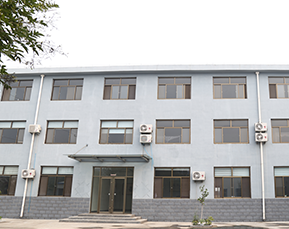 Afrikaans
Afrikaans  Albanian
Albanian  Amharic
Amharic  Arabic
Arabic  Armenian
Armenian  Azerbaijani
Azerbaijani  Basque
Basque  Belarusian
Belarusian  Bengali
Bengali  Bosnian
Bosnian  Bulgarian
Bulgarian  Catalan
Catalan  Cebuano
Cebuano  Corsican
Corsican  Croatian
Croatian  Czech
Czech  Danish
Danish  Dutch
Dutch  English
English  Esperanto
Esperanto  Estonian
Estonian  Finnish
Finnish  French
French  Frisian
Frisian  Galician
Galician  Georgian
Georgian  German
German  Greek
Greek  Gujarati
Gujarati  Haitian Creole
Haitian Creole  hausa
hausa  hawaiian
hawaiian  Hebrew
Hebrew  Hindi
Hindi  Miao
Miao  Hungarian
Hungarian  Icelandic
Icelandic  igbo
igbo  Indonesian
Indonesian  irish
irish  Italian
Italian  Japanese
Japanese  Javanese
Javanese  Kannada
Kannada  kazakh
kazakh  Khmer
Khmer  Rwandese
Rwandese  Korean
Korean  Kurdish
Kurdish  Kyrgyz
Kyrgyz  Lao
Lao  Latin
Latin  Latvian
Latvian  Lithuanian
Lithuanian  Luxembourgish
Luxembourgish  Macedonian
Macedonian  Malgashi
Malgashi  Malay
Malay  Malayalam
Malayalam  Maltese
Maltese  Maori
Maori  Marathi
Marathi  Mongolian
Mongolian  Myanmar
Myanmar  Nepali
Nepali  Norwegian
Norwegian  Norwegian
Norwegian  Occitan
Occitan  Pashto
Pashto  Persian
Persian  Polish
Polish  Portuguese
Portuguese  Punjabi
Punjabi  Romanian
Romanian  Russian
Russian  Samoan
Samoan  Scottish Gaelic
Scottish Gaelic  Serbian
Serbian  Sesotho
Sesotho  Shona
Shona  Sindhi
Sindhi  Sinhala
Sinhala  Slovak
Slovak  Slovenian
Slovenian  Somali
Somali  Spanish
Spanish  Sundanese
Sundanese  Swahili
Swahili  Swedish
Swedish  Tagalog
Tagalog  Tajik
Tajik  Tamil
Tamil  Tatar
Tatar  Telugu
Telugu  Thai
Thai  Turkish
Turkish  Turkmen
Turkmen  Ukrainian
Ukrainian  Urdu
Urdu  Uighur
Uighur  Uzbek
Uzbek  Vietnamese
Vietnamese  Welsh
Welsh  Bantu
Bantu  Yiddish
Yiddish  Yoruba
Yoruba  Zulu
Zulu Understanding the Functionality of Belt Conveyor Return Rollers in Material Handling Systems
Understanding the Importance of Belt Conveyor Return Rollers in Material Handling Systems
Belt conveyors are an essential component of modern material handling systems, widely used across various industries, including manufacturing, mining, and logistics. Among the many components that make up a conveyor system, return rollers play a significant role in ensuring efficient operation and longevity of the conveyor belt.
Return rollers, as the name implies, are used on the return side of a belt conveyor. Their primary function is to support the belt as it returns to the head pulley after discharging its load. Without return rollers, the belt would not have adequate support, leading to sagging, increased wear, and potential belt misalignment. This can result in costly downtime and repair, which is why the design and maintenance of return rollers are critical considerations in conveyor system operations.
Understanding the Importance of Belt Conveyor Return Rollers in Material Handling Systems
Moreover, return rollers contribute to the overall efficiency of the conveyor system. They help reduce the rolling resistance that occurs during operation. A well-designed roller, constructed from high-quality materials, minimizes friction between the roller and the belt as it passes over. This reduced friction not only enhances the system's energy efficiency but also decreases the load on the drive system, potentially extending the lifespan of motors and other powered components.
belt conveyor return roller

Return rollers also play a vital role in minimizing the potential for contamination and damage to the conveyor belt. Throughout their operation, belts often encounter various materials, some of which can be abrasive or corrosive. Return rollers equipped with effective sealing devices can help protect the belt from debris accumulation, which can lead to wear and tear. By keeping the return side clean, the rollers contribute to less frequent maintenance and better overall durability of the belt system.
The choice of materials for return rollers is also important. Typically made from robust materials like steel or durable polymers, these rollers are designed to withstand harsh operating conditions and support the weight of the belt and transported materials. The selection of the right roller will depend on several factors, including the type of materials being conveyed and the environment in which the conveyor operates. For instance, handling heavy, abrasive materials may necessitate the use of specially designed rollers with additional protective features.
In addition to functionality, return rollers can also impact the safety of conveyor operations. A well-maintained roller system can help prevent accidental belt disengagement or slippage, reducing hazards for operators working near the conveyor system. Implementing a regular maintenance schedule, which includes inspecting the return rollers, can further enhance safety and operational efficiency.
In conclusion, belt conveyor return rollers are a vital component of conveyor systems that ensure operational efficiency, support belt alignment, and protect the belt from damage. Their role is often underestimated, yet they are essential in extending the lifespan of the conveyor system and increasing productivity. For industries reliant on material handling, understanding and investing in the right return roller solutions can yield significant operational advantages and cost savings in the long run. As technology advances, the development of more efficient and durable return roller designs will continue to enhance the performance and reliability of belt conveyor systems across various sectors.
-
Revolutionizing Conveyor Reliability with Advanced Rubber Lagging PulleysNewsJul.22,2025
-
Powering Precision and Durability with Expert Manufacturers of Conveyor ComponentsNewsJul.22,2025
-
Optimizing Conveyor Systems with Advanced Conveyor AccessoriesNewsJul.22,2025
-
Maximize Conveyor Efficiency with Quality Conveyor Idler PulleysNewsJul.22,2025
-
Future-Proof Your Conveyor System with High-Performance Polyurethane RollerNewsJul.22,2025
-
Driving Efficiency Forward with Quality Idlers and RollersNewsJul.22,2025





























